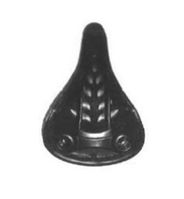- with readers working within the Advertising & Public Relations industries
There is an interesting question to be answered – to what extent does a design detail need to be visible in order for it to be a part of the scope of protection of a registered design for a complex product? This is because features that are not visible in normal use do not contribute towards the novelty and individual character of the design. This is a question that was recently considered by Advocate General Szpunar of the Court of Justice of the European Union (the CJEU).
Towards the end of 2022, Advocate General Szpunar provided his official Opinion on the interpretation of the concepts of 'visibility' and 'normal use'. The Opinion was issued as part of a request for a preliminary ruling by the Federal Patent Court of Germany in relation to a registered design case (C-472/21 – 1) between Monz Handelsgesellschaft International mbH & Co. KG and Büchel GmbH & Co. Fahrzeugtechnik KG. The design in suit was a German design registration owned by Monz comprising the below-illustrated image of the underside of a bicycle seat (Design No 40 2011 004 383-0001).

An important aspect of the case was the question of whether the visibility of an element of the design in a complex product should be determined by its objective position within the product or by its position relative to the observer during certain conditions of use. After all, when riding a bicycle, the underside of the seat is no longer visible, whereas when the bicycle is being stored on a wall or hung from a ceiling, the underside of the saddle may well be very visible! Could it be argued that such storage is the most common "use" of the bicycle, as that would be its condition the majority of the time, and to some, a bicycle can be a design feature for a room?
If the visibility of an element of a complex design it is to be determined by its position relative to the observer during certain conditions of use, is it the 'intended' use of the component or complex product that is considered "normal use" of the component, or can customary use of the complex product by the end user be relevant too (i.e. use as a decorative item)?
One key distinction between "customary" and "intended" use is that customary use refers to the way in which a product is typically used by consumers, while intended use refers more to the way in which the product was specifically designed and marketed to be used. In other words, customary use is determined by the actions of consumers, while intended use is determined by the actions of manufacturers. These uses can vary considerably.
Article 3(4) of the EU Designs Directive 98/71/EC clarifies that "'normal use' within the meaning of paragraph 3(a) shall mean use by the end user, excluding maintenance, servicing or repair work". However, that leave open several ways in which one could interpret the "normal use" of a product under Article 3(4).
One way to interpret "normal use" would be to consider the expected lifespan of the product and the types of use that would be expected during that lifespan. For example, the normal use of a family road car might include driving on paved roads, while off-road driving or using the car as a race car could be considered abnormal use of such a road car. However, would an off-road vehicle (or even a road car with four wheel drive and a higher ground clearance) be treated differently?
Another way to interpret "normal use" would be to consider the frequency and intensity of use of the product. For example, the normal use of a small lawnmower might involve using it once a week to cut a residential lawn, while using it multiple times a day to cut commercial properties could be considered abnormal use, whereas a commercial grade lawnmower would be the reverse of that.
A third way to interpret "normal use" would be to consider the intended user of the product and the use of the product that would be expected by that user. For example, the normal use of a child's toy might involve play by a child, while use by an adult for any purpose other than supervision would be considered abnormal use.
Overall, the interpretation of "normal use" may depend on the specific circumstances of each case and may require the consideration of additional factors. Therefore, it can be important, when considering the scope of protection of a design, to consider a number of factors in respect of the kinds of use to which the product would be employed.
In this particular case, the Advocate General examined the concepts of 'visibility' and 'normal use' and concluded that Article 3(4) of the Designs Directive should be interpreted broadly to take into account all uses which are not completely atypical or obviously engineered, with the sole exception of expressly excluded maintenance, servicing and repair work. This Opinion thus may broaden the scope of "normal use" when it comes to determining the scope of protection of a registered design. After all, this can significantly broaden what can be considered "visible" in a complex product. Such an interpretation has the potential to limit the protection that design rights holders can achieve for their designs, as features of the design that might have been considered "not visible in normal use" under a strict interpretation of "normal use", and which features were thus previously removed from the scope of the design registration, might now be included within the scope of protection. On the other hand, this might now make valid those design registrations for such less visible details of a product of a design registration.
This Opinion will be of significant interest to some Original Equipment Manufacturers (OEMs), as they may have a greater opportunity to protect the less visible aspects of spare parts, while manufacturers of aftermarket spares may experience greater difficulties with producing direct replacements, although it will also provide an incentive for greater design innovation, as changing the appearance even of less visible parts may be enough to avoid an infringement if a broad interpretation of "normal use" is to be applied to the OEM's design registration.
The Opinion has therefore raised pertinent questions in relation to the legislation surrounding the protection of designs within a complex product and it will be interesting to see whether it is followed by the CJEU.
At Marks & Clerk, our designs experts regularly advise clients on how to obtain the most from their design registrations and filing strategies. We can also provide advice concerning the scope of protection afforded by third party registrations.
If you would like to know more about design protection strategies, whether registered or unregistered, or opinions on the likely scope of protection of pre-existing registrations, please do not hesitate to contact us.
The content of this article is intended to provide a general guide to the subject matter. Specialist advice should be sought about your specific circumstances.
[View Source]


